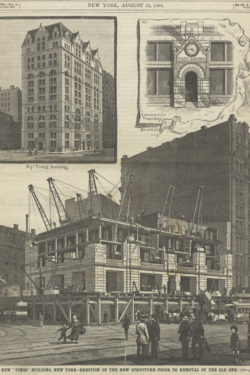New York structural engineer Donald Friedman, author of The Structure of Skyscrapers in America, 1871–1900, revisits the fabled architectural rivalries of America’s largest and most innovative cities. His talk keeps a tight focus on the key decades of the 1870s, the beginning of the end of “the age of masonry,” and the dawn of mass-production of rolled steel I-beams, which from the mid-1880s offered new economies for construction. Yet the eventual marriage of masonry and metal took time to birth the full steel skeleton, often called “the Chicago frame.”
Friedman explores the ways that traditional bearing walls enlarged window openings to illuminate interior workspaces until the wall became, in effect, a frame, and how hybrid systems of “cage construction” served practical purposes and were slow to disappear in practice. He emphasizes how construction moved toward industrial materials to reduce the cost of skilled labor, especially bricklayers. In Friedman’s succinct formulation: modern structure is industrialized structure.
This program builds on several past lectures at The Skyscraper Museum by the speaker: the videos of these previous talks are highly recommended as background for this discussion.
Donald Friedman, Structural Systems of Early Skyscrapers.
Donald Friedman
Donald Friedman, a structural engineer, is the president of Old Structures Engineering and author of several books, including Historical Building Construction (1995, rev. 2010). His 2014 study “Structure in Skyscrapers: History and Preservation” was the inspiration for the exhibition TEN & TALLER, 1874-1900. His upcoming book, The Structure of Skyscrapers in America, 1871-1900: Their History and Preservation surveys the development of high-rise buildings across the country in the last decades of the nineteenth century (Association for Preservation Technology, 2020).
View Donald Friedman's "Masonry to Steel" slideshow presentation
